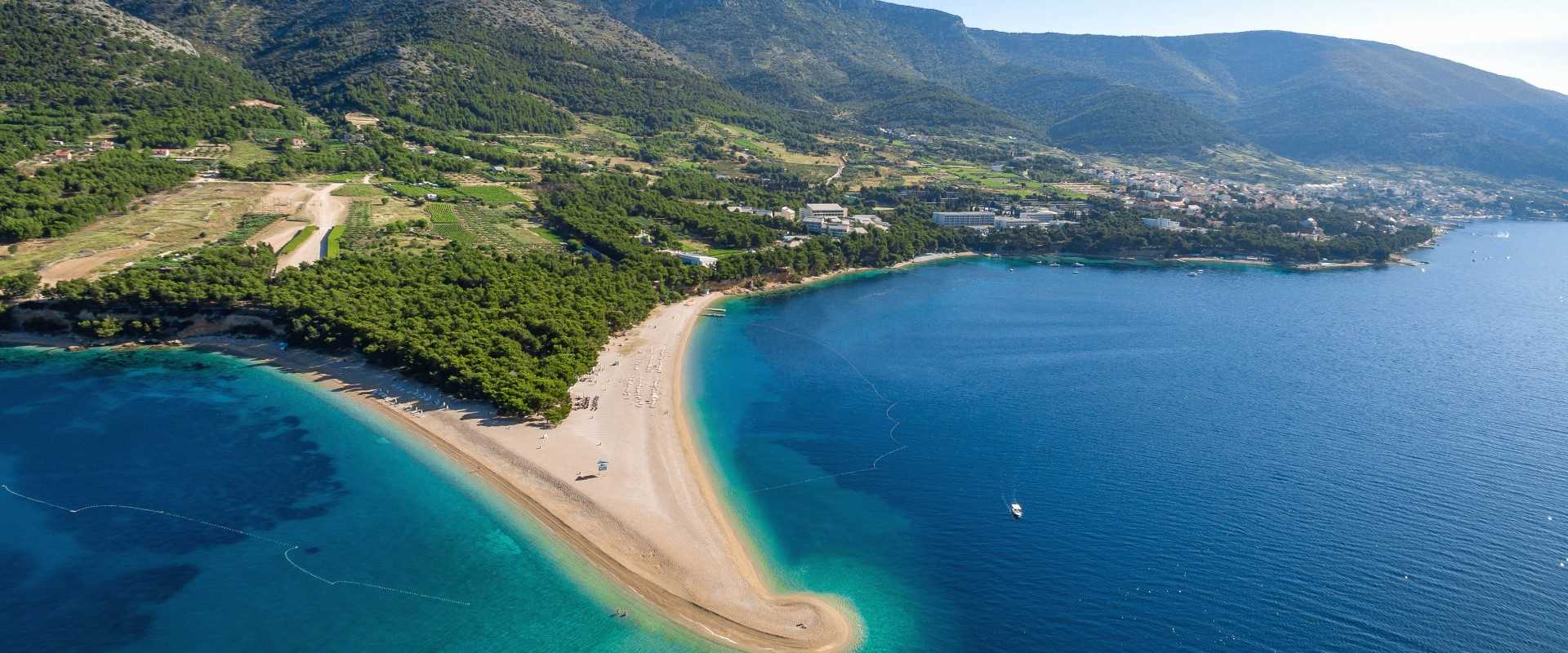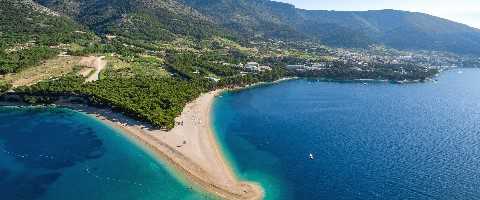Central Dalmatia starts from just north of Sibenik and continues south, encompassing the islands of Brac, Hvar and Vis (Vis is the farthest inhabited, westerly island in the Adriatic), as far as Gradac. More mountainous than North Dalmatia, it is home to some of Croatia’s most beautiful medieval towns, and Split is the main cultural and economic centre, Croatia’s second city, never mind being the biggest and busiest port in Croatia. Split is one of the most extraordinary examples of a town of the late Roman world and home to Roman Emperor Diocletian’s Palace whose four walls form the core of the old town. In the past ten years, Split has been the choice of visitors for more than a day or two as was the case previously. The Riva promenade is stunning, the columns and artefacts in Forum square tell of travels by the Romans. The National Theatre, bars, restaurants and shops are used by locals alongside visitors. There’s an awesome covered fish market (shop there before 11am as the prices increase then!) plus a wide sandy beach called Bavice, rare in Croatia. No visit to any part of the Dalmatia region should miss Split.
The nearest island is Brac, just a 50 minute ferry ride from Split, with fewer visitors than to the island of Hvar to the south. Brac is famous for white stone from quarries there. Stonemasonry has passed from family to family and there is still a stonemasonry school.
As with many of the Croatian islands, outside of peak mid-July end August, there are far fewer crowds and prices are usually lower.
The island’s capital is Supetar, a lovely expanded fishing port and harbour where the ferry arrives from Split, yet many visitors head for the undeniably stunning V shaped Zlatni Rat beach whose tip changes shape and direction according to the wind.
On Brac, don’t miss Vidova Gora peak, the highest peak in the Adriatic at 780 metres. Take an excursion that combines this with a visit to the Blaca Monastery. Both can be done independently but prepared to be exhausted!
Hvar island, to the south, is possibly Croatia’s best-known island. It has been labelled “hippest”, the “jet-set” spot and so on. It is very long from west to east and yet just a 25-minute drive across from north to south. Its capital Hvar Town is built around a small harbour and backed by a hilltop fortress known as Spanish Fort (curiously, the Spanish were never there). The old town is made up of winding cobbled streets which converge onto a vast piazza. Elsewhere the island is covered with hebs, vineyards and lavender fields. Lavender harvest is usually in June and sometimes visitors can join in (by hand and it is back-breaking work with dawn start).
On the north coast of Hvar, the town of Stari Grad (meaning “old town”) is a place we love. It’s the point of entry for car ferries from Split and it was here that Greeks from Paros settled in 385 BC. Unspoilt, time-warp, where family businesses still thrive. Not to be missed is the 16th century summer retreat of poet Petar Hekterovic called Tvrdalj with inscriptions, open ceilings, fish pond and garden. It is exquisite.
The island of Vis would require a book to describe its amazing history. Suffice it say that there is little accommodation, Conde Nast Traveller declared Stinica beach one of the most beautiful anywhere and the British still occasionally play cricket at the old airfield! Vis Town and Komiza are the main places, full of authentic fish restaurants and wine cellars. Best discovered on one of our Dalmatian cruises. If you like it, we can arrange for you to return for a few days at the end of the cruise.
Back on the mainland and 35 minutes north of Split, Trogir is a walled mediaeval town, a warren of narrow streets radiating from the cathedral. The UNESCO listed heritage site reflects the influences from the time of the Greeks in 300 BC to the modern day (you cannot miss that the Venetians were here). There is a good bus service from Split and a rather delightful boat line to Trogir from May to October.
Sibenik is Dalmatia’s second city and the centre of the old town teems with tiny palaces, chapels, squares and the golden amber unmissable Cathedral of St Jacob. On the far side of town, the remains of an industrial quarter tell of the city’s more recent past. If you seek fine dining, check out Pelegrini which holds a one Michelin star.
The Makarska Riviera is around 80 minutes south of Split airport and is famous for long, curved pebble beaches fringed by pine trees, backed by Mount Biokovo peak. We feature Makarska itself, Baska Voda and Tucepi, all charming and easy for exploring the rest of Central Dalmatia.
Did you know?
- Krka National Park is easy from anywhere in central Dalmatia and the park takes its name because it encompasses the majority of the 75-kilometre-long Krka River. A series of 17 blue cascades tumbling over limestone, pools and semi-submerged forest.
- Split holds an Advent Fair on the Riva seafront promenade every December including Santa Claus, often spotted enjoying a coffee break.
- Diocletian’s Palace is actually, really used. It isn’t a monument. There are even a couple of bars situated within the very palace walls.







